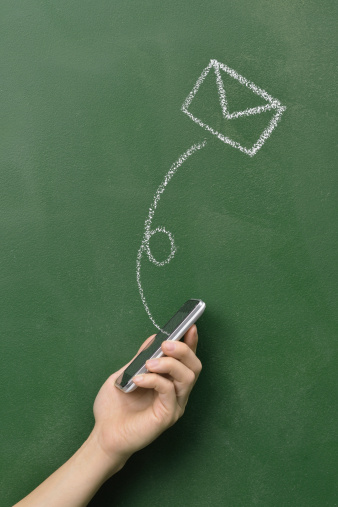

No matter how much time we spend trying to optimize our inbox—from batch checking messages to adding bells and whistles—email takes over our lives. Looking at my stats from last month, I received and processed over 10,000 emails (eek!), so finding the right way to manage all this online correspondence has been critical for my day-to-day sanity.
Turns out, though, the “right way” to manage email depends a lot on your own personal style. I’ve rounded up some of the most popular and successful strategies so that you can decide which one is best for you:
1. LIFO: Last In First Out
This technique is predicated on letting the old stuff deal with itself. It’s the most common way that people deal with their inbox, reading through email top-down (a.k.a., starting with the most recent email received).
This is highly convenient and intuitive, but there are two primary risks of this strategy. The first risk is that you’ll likely end up with inconsistent responsiveness. On days that you have a lot of time to spend on email, you’ll reply to contacts lightning-fast. On days that you’re busy and in meetings, you’ll have messages pile up and get buried under newer emails.
The second risk is that you may miss out on good opportunities because you didn’t follow up in time. If you choose to use this strategy, but want to mitigate these risks, I would recommend blocking an hour or two once a week during which you switch to the reverse chronological approach (conveniently outlined below). This way, you’ll clear out anything old that might be important.
2. Reverse Chronological
The opposite of LIFO, taking a reverse chronological approach means dealing with the oldest emails first. If you use Gmail, you can switch the sorting of your inbox, by just clicking the email counter in the top right corner.
With this strategy, you’ll often be confronted with harder emails you’ve been putting off, which is great for any chronic procrastinators. However, there is one downside to this strategy. If you work someplace where you constantly receive urgent emails that really do need to be answered right away, it might be risky to take a reverse chronological approach. With that said, you can definitely combine this strategy with LIFO during the actual workday if that’s the case.
3. Yesterbox
Famously used by Zappos CEO Tony Hsieh, the Yesterbox technique focuses on dealing today with all of the email you received yesterday. Hsieh explains:
“Your ‘to do’ list each day is simply yesterday’s email inbox (hence, ‘Yesterbox’). The great thing about this is when you get up in the morning, you know exactly how many emails you have to get through, there’s a sense of progress as you process each email from yesterday and remove it from your inbox, and there’s actually a point when you have zero emails left to process from yesterday. There is actually a sense of completion when you’re done, which is amazing.”
This is a great strategy for anyone who feels like they’re constantly drowning in email. While I recommend reading his entire how to, the best part is definitely the amount of control you’ll regain over your inbox. Unlike other methods, your target remains the same as the day goes on, and you’ll find over time that you get a better handle of how long email will take you to get through. Did you receive 25 emails yesterday? OK, that might take you a little over an hour. Have a big day with 70 emails coming in? You can plan ahead and block additional time to manage the volume.
4. Inbox Zero
A term coined by Merlin Mann, Inbox Zero is an email strategy by which the goal is to always keep your inbox 100% empty. There are some big benefits to this: Everything is always handled, and you don’t waste time re-reading an email for the third time before actually taking action. This strategy is good for Type-A list-makers (like me!) who like to have complete control on their inboxes. But from my experience, it’s easy to let your inbox dictate your life if you take this too far. Pro tip: Couple Inbox Zero with Boomerang for Gmail, an app that lets you file messages out of your inbox until the date and time of your choosing, so you can decide between actually answering and delaying for later, as need be.
If you’re trying it for the first time, I recommend checking out Lily Herman’s week-long challenge to stay at Inbox Zero before you start.
After trying each method, I can say with certainty that choosing a strategy is all about matching your personal preferences with any habits you’d like to encourage (or discourage). You may find that mixing and matching works best for you. I went a long while at Inbox Zero and have decided that the stress of getting those last few done wasn’t worth it. But I do keep my inbox under 20 emails by the time I go to bed each night—just short enough that I can see all of them on my screen for a quick check that nothing fell through the cracks. As long as you’re not a slave to your inbox and anyone who needs to hear from you is getting an answer in a timely manner, who’s to judge?
This post is in partnership with The Muse. The article above was originally published on The Muse.
More from The Muse:
More Must-Reads from TIME
- Cybersecurity Experts Are Sounding the Alarm on DOGE
- Meet the 2025 Women of the Year
- The Harsh Truth About Disability Inclusion
- Why Do More Young Adults Have Cancer?
- Colman Domingo Leads With Radical Love
- How to Get Better at Doing Things Alone
- Michelle Zauner Stares Down the Darkness
Contact us at letters@time.com